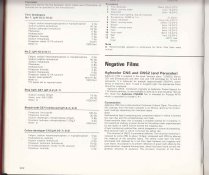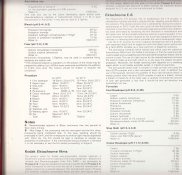BurntOutElectronics
Member
g’day everyone
I hope I’ve put this in the right section.
I was wondering if the formulas to ilfords colour film like the old Ilford Color ‘d’ or ilfocolor were ever published? I can’t imagine why not as they haven’t been made in 50 odd years.
and if not what about AGFA’s old in house colour film like Agfacolor?
If none of that is there any black and white formulas published from these company’s? I’ve been interested in learning about early colour film and how it eventually evolved to the c-41 and e-6 process
Thanks
I hope I’ve put this in the right section.
I was wondering if the formulas to ilfords colour film like the old Ilford Color ‘d’ or ilfocolor were ever published? I can’t imagine why not as they haven’t been made in 50 odd years.
and if not what about AGFA’s old in house colour film like Agfacolor?
If none of that is there any black and white formulas published from these company’s? I’ve been interested in learning about early colour film and how it eventually evolved to the c-41 and e-6 process
Thanks
Last edited:











